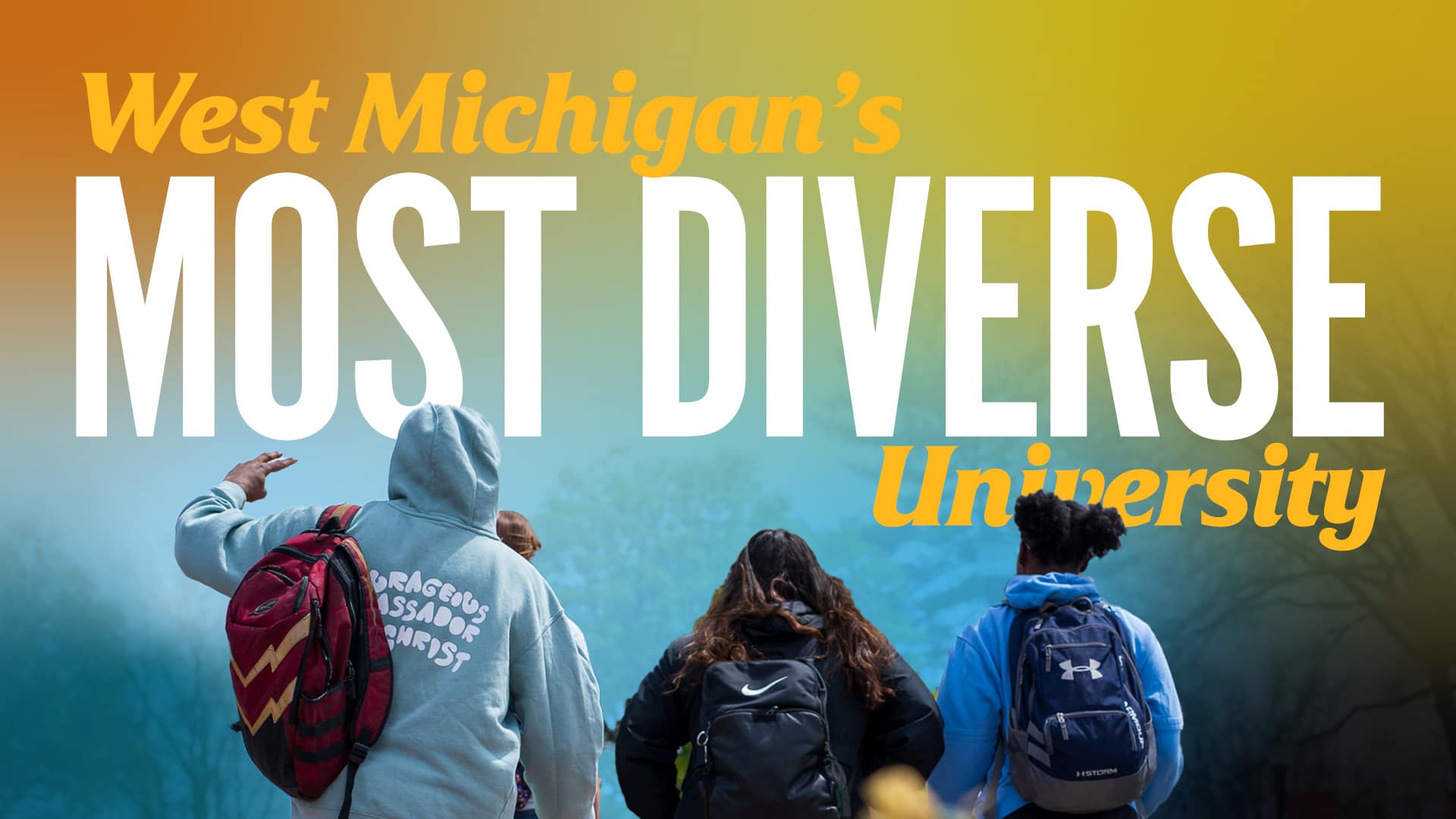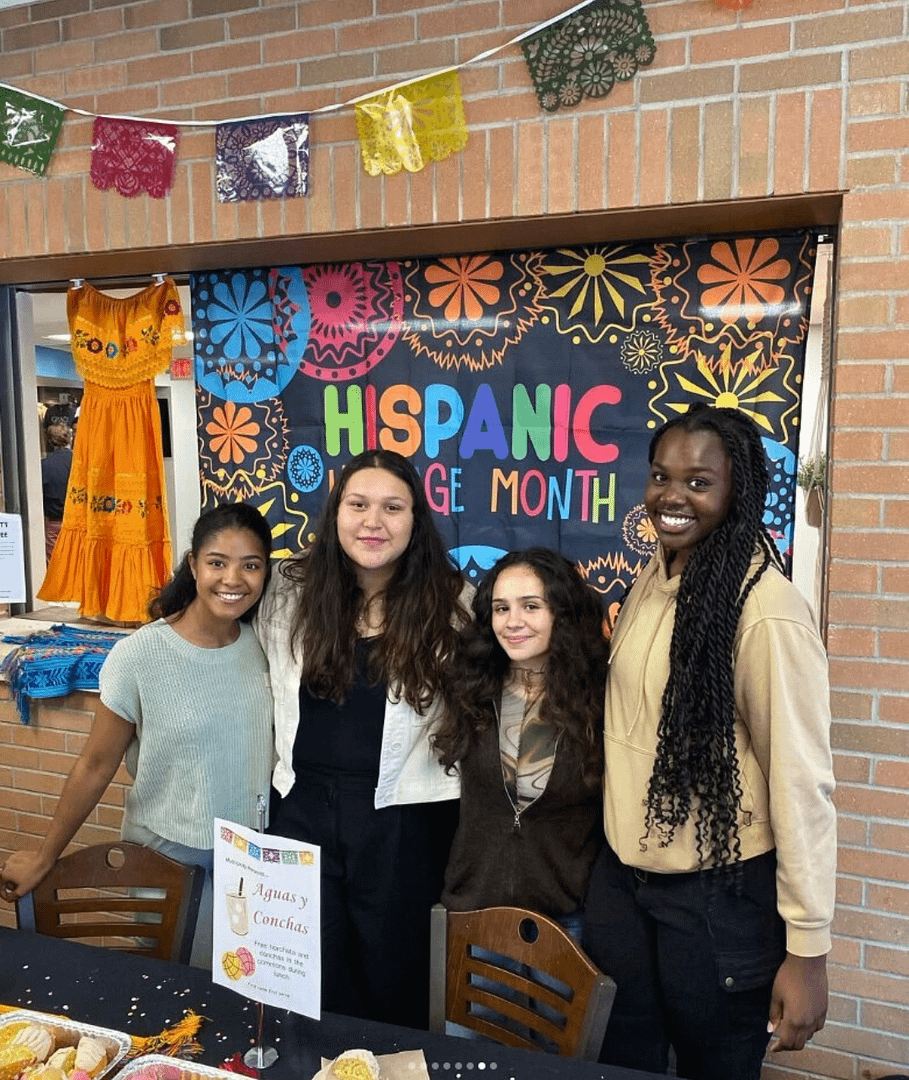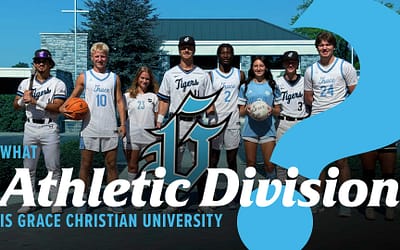When you’re exploring colleges, the search often starts with academics, location, or cost. Those are important. But just as essential is the question of community.
Who will you learn beside? Whose stories will shape yours?
A diverse learning environment brings different perspectives. It challenges assumptions, deepens understanding, and reflects the beauty of difference.
According to data from the Integrated Postsecondary Education Data System (IPEDS), Grace Christian University in Wyoming, Michigan, stands out among West Michigan institutions for its diversity. In fact, Grace reports the highest percentage of domestic students from racial and ethnic minority backgrounds in the region.
For this comparison, “raw ethnic %” reflects the straightforward percentage of domestic students who identify as racial or ethnic minorities, based on IPEDS data. This measure excludes international students and those with unknown race or ethnicity, offering a clear look at how each West Michigan university represents domestic diversity on campus.
A Snapshot of West Michigan’s Colleges
Every campus in West Michigan tells a different story. Some serve thousands of students from across the country; others are small communities. Yet each shares a commitment to preparing students for their future.
When we look at IPEDS data on student demographics, focusing specifically on U.S. students identifying as non-white, the differences across institutions become clear:
| University | Location | Approx. Non-White % (Domestic Minorities) | Notes |
|---|---|---|---|
| Grace Christian University | Wyoming | ~43% | 20% Black, 9% Hispanic, 4.5% Two or More Races, 2% Asian |
| Davenport University | Grand Rapids | ~35–38% | Private; balanced Black and Hispanic mix |
| Grand Valley State University | Allendale | ~32% | Moderate growth in Hispanic and Black representation |
| Calvin University | Grand Rapids | ~20% | Improving but lower domestic minority representation |
| Cornerstone University | Grand Rapids | ~20% | Similar to Calvin’s composition |
Source: Integrated Postsecondary Education Data System (IPEDS), National Center for Education Statistics (nces.ed.gov)
Grace’s 43 percent domestic minority enrollment positions it above these peers. This is not a competition. Instead, it’s an invitation to notice how each university reflects its context: Grand Valley’s public reach, Davenport’s professional focus, Calvin and Cornerstone’s theological heritage, and Grace’s smaller, more relational environment that draws students from across racial and cultural backgrounds.
Diversity as Discipleship
Numbers help us understand, but they don’t tell the whole truth. A percentage can show how many students come from underrepresented groups, but not how those students feel, learn, or are supported once they arrive.
At Grace Christian University, the 43 percent of domestic students who identify as non-white represent more than a statistic; they represent the richness of experience that shapes a campus community rooted in Biblical truth.
For a Christian university, diversity carries an added dimension. It’s not framed around politics or public recognition, but around learning to see one another as created in the image of God.
Each student brings a story shaped by their home, church, and culture. Those stories meet in classrooms, chapels, and conversations that stretch across differences and draw people closer. The mix of backgrounds on Grace’s campus turns everyday interactions into lessons in empathy and respect. It’s where students learn to listen well, to lead with humility, and to find unity in shared purpose.
Dr. Ken Kemper, president of Grace, often reminds the community that “education is about transformation.” That transformation happens not only through coursework or chapel messages but also through learning from one another.
The Multi-Unity Committee at Grace
Words matter. But action matters more.
That’s why two Grace students, Stacy and Nevaeh, founded the Multi-Unity Committee, a student-led initiative that brings conversations about different cultures to campus.
The Committee exists to answer a simple question: How can we intentionally build a campus where every person feels known, valued, and united in Christ?
These students share their faith while embracing the different cultures represented on campus. They hold regular committee meetings and create intentional times for people from different cultural backgrounds to connect. They mentor incoming freshmen who wonder, “Will I belong here?”
The Multi-Unity Committee brings Grace’s diversity to life through cultural heritage celebrations. They honor Black History Month, Hispanic Heritage Month, Asian American and Pacific Islander Heritage Month, and Native American Heritage Month. Each celebration offers the students an opportunity to learn, and participate in traditions that might be unfamiliar but are deeply important to their classmates.
The Responsibility of Representation
Grace’s demographic diversity also creates responsibility. Representation without inclusion is incomplete. That’s why ongoing conversations around support, mentoring, and campus engagement remain essential.
IPEDS data can highlight progress, but they don’t measure, safety, or belonging. Those depend on people, the faculty who learn students’ names, the staff who guide first-generation learners, the Multi-Unity Committee members who check in on struggling peers, and the community that prays together in difficult seasons.
It requires constant attention, genuine curiosity, and the courage to admit when we’ve gotten it wrong—because unity grows through honesty, humility, and the willingness to keep showing up for one another.
A Community That Reflects God’s Family
Grace’s commitment to diversity is about preparing students for a lifetime of faithful service in an increasingly diverse world.
When students graduate from Grace, they don’t leave their multicultural experiences behind. They carry them into churches, classrooms, hospitals, boardrooms, and mission fields. They become pastors who can minister across cultural lines. Teachers who understand their students’ diverse backgrounds. Business leaders who value every voice at the table. Missionaries who approach cross-cultural work with humility and respect.
God’s family is made up of every nation, tribe, people, and language. Grace’s diverse campus offers a glimpse of that eternal reality, and equips students to live it out now. Alumni often speak of their Grace friendships as some of the most formative of their lives, connections that taught them to see beyond their own experiences and embrace the fullness of God’s family.
A Portrait of Unity
The real measure of Grace’s diversity isn’t found in the stats. It’s found in the student who finally feels seen. The friendship that crosses every cultural line. The chapel service where every voice lifts a song of praise to Jesus.
That’s what makes a university truly diverse, not the numbers on a form, but the lives being transformed and identities rooted in Christ. It shows up in the way students listen to one another, honor each other’s stories, and grow together in a community. It’s the daily moments of connection, courage, and understanding that reveal what God is doing here.








